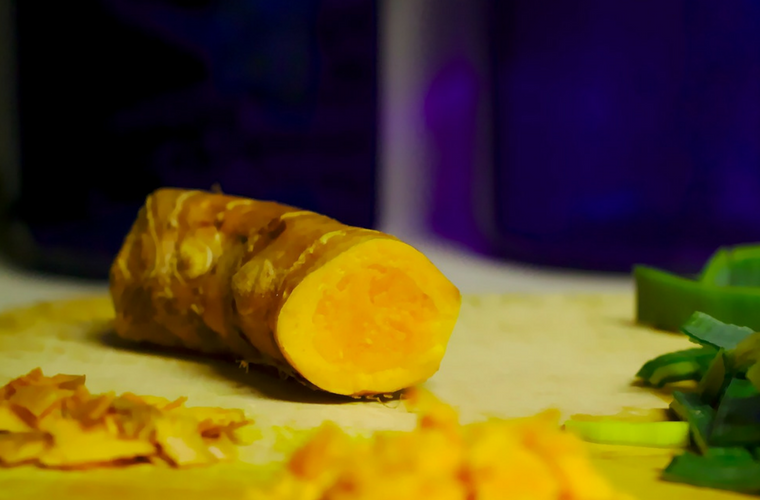Image courtesy of Pixabay/SoFuego
Several years back, I decided to incorporate a lecture on spices into a course I teach. As I was pulling materials together, I came across a large variety of fascinating information on benefits of spices.
The scientist in me was fascinated by the discussion of Darwinian gastronomy, a concept describing the roots of our love for spices. It became very clear to me that our preference for spices is often based on the concept that they are good for us.
Many major expeditions that lead to discoveries of new continents all of a sudden made better sense to me. The voyagers exploring new lands, like Marco Pollo, Ferdinand Magellan and Christopher Columbus, were looking for spices.
Are you wondering ‘why?’
In the Medieval Europe the royalty used spices by the pound to protect themselves from infections in the places that lacked sanitation.
Another place that holds the answer to this question is exploration of cook books from late 1800’s (pre-refrigeration era). The researchers compared the number of spices in meat recipes made in places like China, Thailand, Greece versus Scandinavia and Russia. It probably will not surprise you that hotter places where food spoils quicker typically had much higher number of spices added to each dish.
Some (but not all) like it hot
I was born in Eastern Europe, and during my childhood I primarily saw 4 spices used in cooking – salt, pepper, bay leaf and cinnamon.
The first time I was introduced to a much greater diversity of cooking spices was when I immigrated to the United States. It actually happened in the first few months of us arriving here.
One day my grandmother and I found ourselves in the center of the city. We were returning home, but got terribly hungry, and decided to find a place to eat.
This was almost 30 years ago, but I remember that on this day our choices were limited. The only place that looked inviting was a local Indian restaurant.
I remember how cautious my grandmother was – we were not familiar with that cuisine up until then.
After a long conversation with the waiter we placed an order for soup. He assured us that it won’t be hot and spicy.
Few minutes later the soup arrived. My grandmother was very upset. To us, it was HOT. We were not used to the majority of spices and sensations.
Looking back, I know that soup was pretty mild, but it burned our naive palates.
Like the majority of Indian dishes it probably contained 7-15 different spices. One of those spices was turmeric.
Since then I’ve learned how to incorporate spices into my diet, and today can tolerate a lot more heat in cooking. Indian and Thai cuisines are some of my favorites.
New appreciation for spicy food and one specific spice
Overtime, in addition to enjoying the taste and flavors, I began appreciating all the medicinal benefits of spices.
I heard from several of my herbal teachers – if you want to learn about herbs, incorporating spices into your diet is a great way to start.
One good place to start…
Turmeric (or Curcuma longa) is a plant that originally comes from India. You might know and like one of its’ relatives, Ginger. Both of them belong to Zingiberaceae family.
The root is bright yellow in color, and used not only for cooking and medicine but also for coloring, perfume and cosmetics.
Curry is a great place to start experiencing turmeric. Some recipes are hot/spicy, but other ones are more mild.
Beneficial properties
In the herbal world, turmeric is known for its many effects – from antibacterial, anti-inflammatory, antioxidant, antispasmodic, antitumor, anticholesteremic to carminative, hepatoprotective, immunoregulating, nutritive and styptic.
A lot of research in turmeric actually looks at one of its main ingredients, called curcumin.
Let’s look at 6 of the research-based benefits of turmeric
1. Joint health
Turmeric has been effectively used to treat osteoarthritis of the knee. Several studies show increase in functionality and decrease in pain in patients with osteoarthritis of the knee taking supplements that contain turmeric. Additionally, patients decrease their use of pain medications as a result.
Turmeric has been compared to several conventional medications, such as ibuprofen and diclofenac. It seems to perform as well as ibuprofen but is inferior to diclofenac.
Turmeric has also been used for the treatment of osteoarthritis when combined with other herbs and natural products including boswellia, ashwagandha, zinc, devil’s claw, bromelain.
Some combination products seem to significantly decrease joint pain but not stiffness and overall function when compared to placebo.
Other studies suggest that curcumin might decrease stiffness, walking time and joint swelling in patients with rheumatoid arthritis in comparison with placebo, and in some cases even more than diclofenac.
2. Digestive Health
Turmeric can decrease symptoms of dyspepsia (discomfort in upper abdomen) after using for several days.
It can also reduce the symptoms of irritable bowel syndrome to baseline in more than a half of patients.
In patients with Crohn’s disease, curcumin decreases diarrhea, abdominal pain and bowel movements in comparison to those taking placebo.
Taking curcumin helps to decrease symptoms of ulcerative colitis in patients taking 5-aminosalicylic acid and steroids; as well as sulfasalazine or mesalamine.
Additionally, turmeric extract enemas have been used on enhance the response rate and rates of remission.
Turmeric mouthwash has been used to decrease severity of gingivitis, oral bacteria and plaque and is as effective as conventional chlorhexidine mouthwash.
At last, turmeric has been researched as a possible treatment of Helicobacter pylori infected gastritis.
3. Heart health
Turmeric appears to reduce levels of total cholesterol, bad cholesterol (LDL and VLDL), as well as triglycerides in overweight patients with high lipid levels.
Curcumin, one of the main active ingredients of turmeric, also significantly decreases the risk of heart attack when used after coronary bypass surgery.
4. Cancers
There is a significant amount of research done on turmeric and cancer. Turmeric in combination with other natural compounds appears to stabilize colorectal cancer progression in patients with disease refractory to treatment. Curcumin also reduces number of rectal polyps in patients at high risk (for example smokers).
Men with prostate cancer who took a whole food formulation that included turmeric powder saw lesser increase in prostate specific antigen (PSA) (sign of slowing disease progression) than those in placebo group.
Turmeric solution given to patients who underwent radiation therapy for treatment of head and neck cancer helped to delay or reduce inflammation of mucous membranes by close to 50% in comparison with conventional treatment with povidone-iodine solution.
At last, turmeric alcoholic extract with turmeric ointment appear to help decreasing odor and itching of skin lesions associated with different types of cancer.
5. Skin health
Turmeric decreases symptoms of itching in patients with end-stage renal disease. In addition, curcumin with other natural products reduces severity and improves quality of life of patients with chronic itching.
Taking a specific type of turmeric extract helps patients to reduce redness and ulceration related to condition called lichen planus (skin rash triggered by immune system.)
6. Autoimmune disease
Turmeric has been used to improve symptoms of chronic inflammation in the eye.
Taking turmeric extract helps prediabetic patients to avoid progression to type 2 diabetes.
Turmeric can reduce blood pressure and enhance kidney function in patients with inflammation of kidneys associated with systemic lupus erythematosus.
If you are still not sufficiently impressed…
Turmeric can boost the effectiveness of conventional medication fluoxetine, in treating major depressive disorder.
Combined with another plant, it can decrease tuberculosis bacteria (Mycobacterium tuberculosis) and help to enhance healing of tuberculosis lesions. The combination can also help to minimize liver toxicity from the conventional anti-tuberculosis treatment.
At last, using turmeric after a surgery has been shown to decrease pain, fatigue and need for pain medications.
Keeping this in mind
As a spice, turmeric is safe in culinary doses.
The plant can stimulate blood flow, so it should not be used in large (medicinal) amounts in pregnant women.
Another reason to be cautious, curcumin is known to chelate iron. As a result, patients with anemia should be careful with this plant.
Turmeric is not readily absorbed. If you want to boost its absorption, cook turmeric with fats (ghee, coconut milk, cow milk) and add black pepper. Piperine, one of the active ingredients in black pepper is known to enhance the absorption by our bodies.
In the next few weeks, I’ll share with you some of my favorite turmeric recipes.
In case you want to give it a try, you can get turmeric from local herbal store or from Mountain Rose Herbs.Questions: Do you use turmeric in cooking? If so, how? If not, would you be willing to give it a try?



1 Comment
Shawn Romano
April 17, 2017 - 12:10 pmHey Lana! I’ve been hearing more and more about turmeric lately. My father swears by it as an anti-inflammatory. He was taking a daily dose of ibuprofen and began to have stomach discomfort, so he switched to a mega-dose of turmeric mixed with olive oil and black pepper. He said his joint issues have continued to improve, even without the ibuprofen. Thanks for this article. It inspired me to blend powdered turmeric with my sweet potatoes yesterday—and it was great!